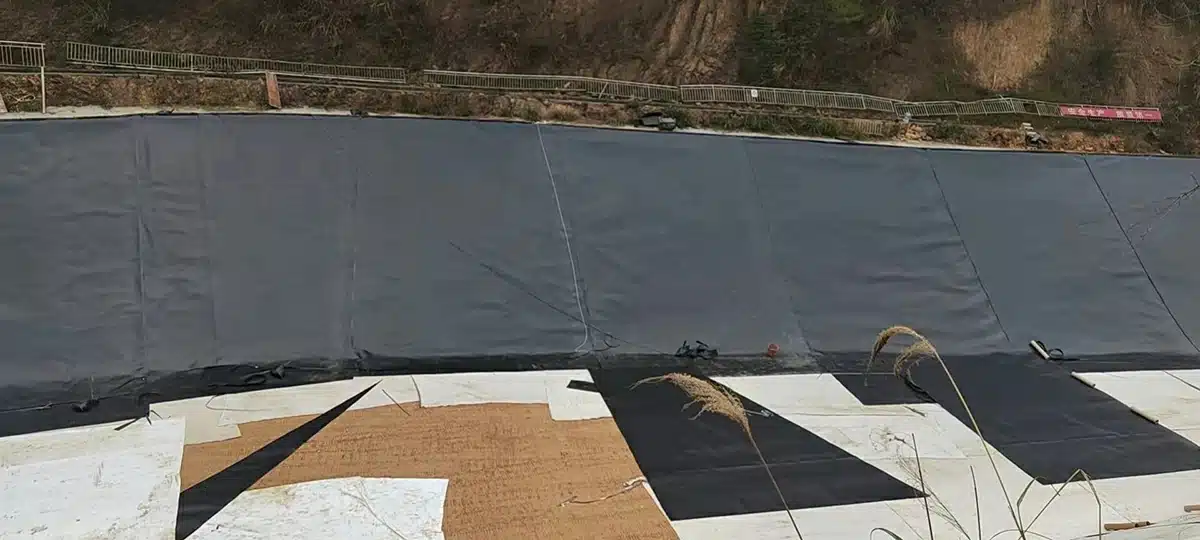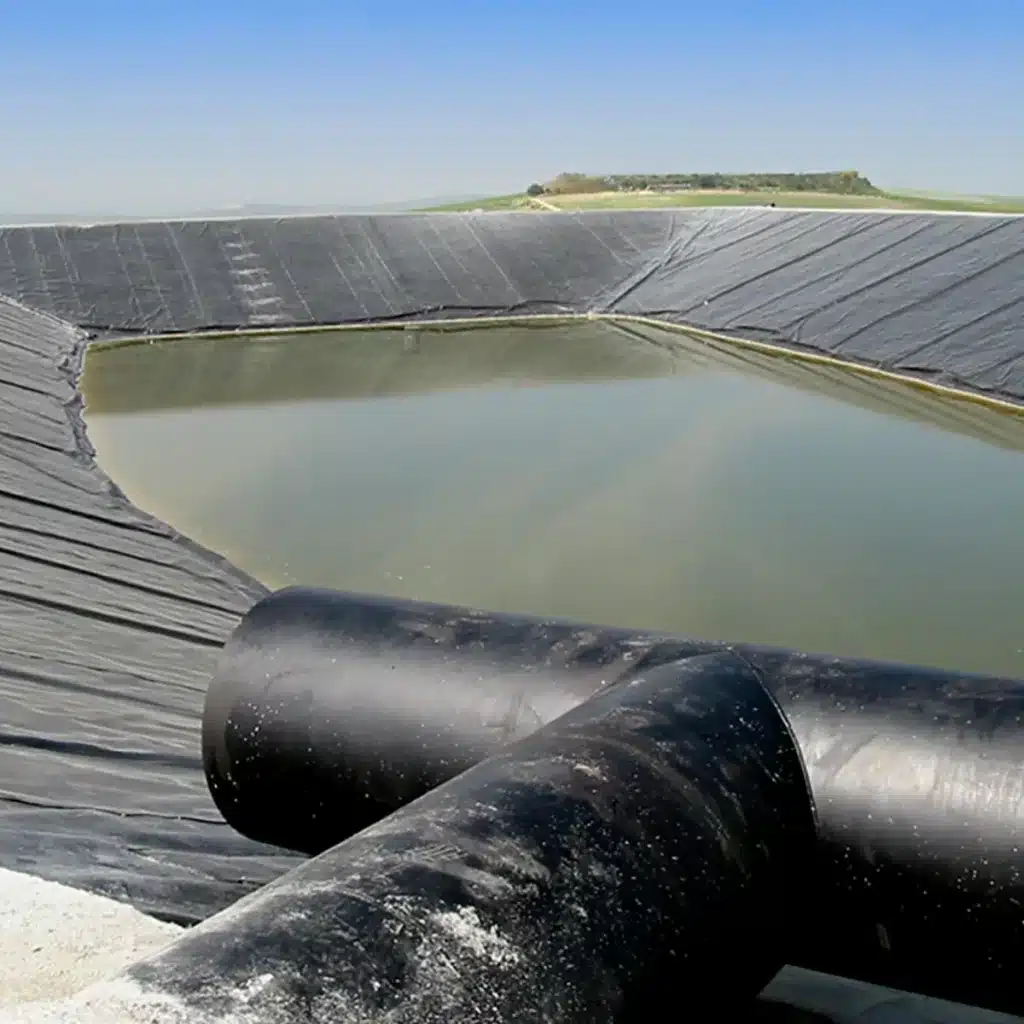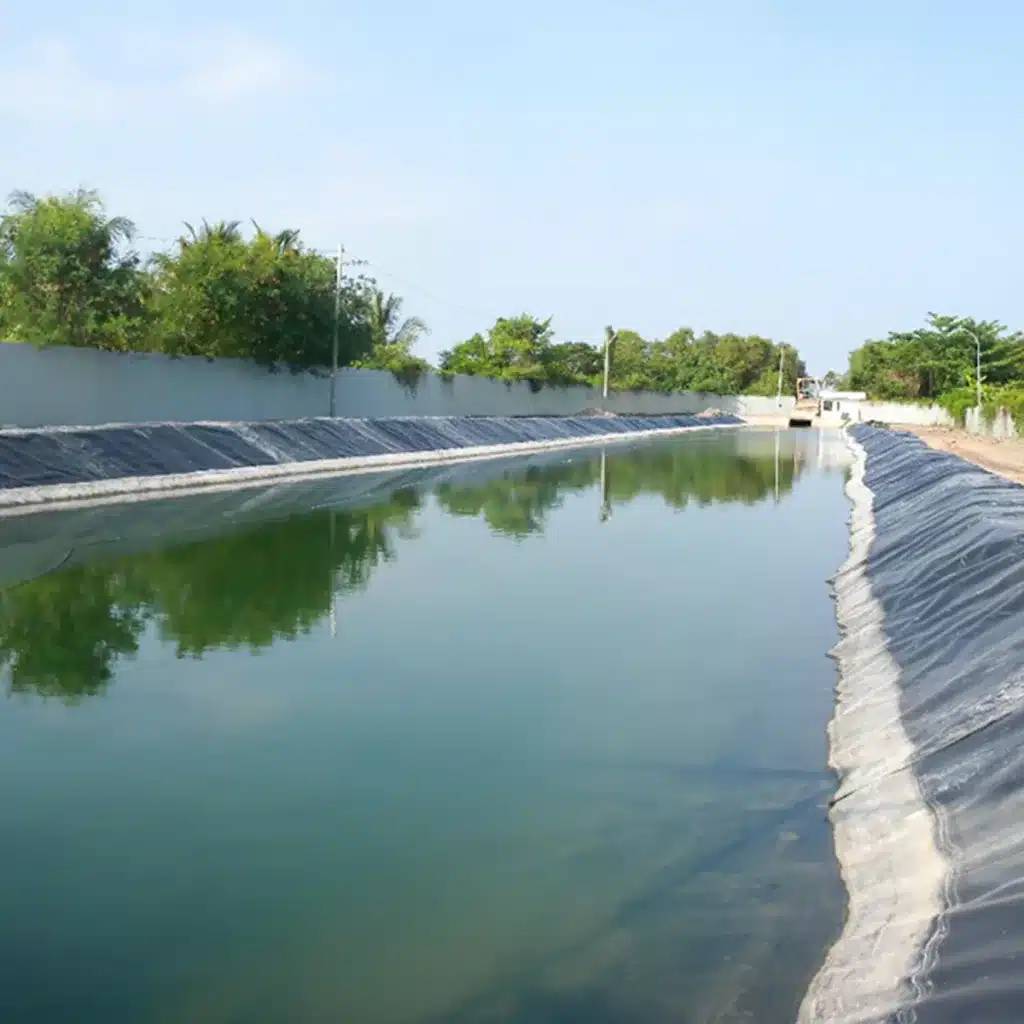+86-159 9860 6917
info@geofantex.com
geofantex@gmail.com
+86-400-8266163-44899
In the quest for sustainable environmental protection solutions, impervious geomembrane technology has emerged as a cornerstone in safeguarding soil and water resources from contamination. This popular science article delves into the essence of geomembrane materials, focusing on their impervious characteristics, applications, and the critical distinction between impervious and impermeable surfaces. Join us as we unravel the mysteries of this modern marvel, shedding light on its pivotal role in contemporary environmental engineering.

What is geomembrane material?
Geomembrane material, made from relatively thin continuous polymeric sheets, is a type of synthetic or natural liner or barrier used primarily in environmental, geotechnical, and hydraulic applications to control fluid (or gas) migration in a human-made project, structure, or system. These geomembranes are engineered to be low-permeability barriers that can effectively contain or exclude liquids and gases. Their composition varies, including materials like HDPE (High-Density Polyethylene), PVC (Polyvinyl Chloride), and EPDM (Ethylene Propylene Diene Monomer), each selected based on the specific requirements of the application, such as chemical resistance, flexibility, and durability.
What is impermeable geomembrane?
An impermeable geomembrane, often used as an impermeable membranes in conjunction with rocks or earth to block fluid migration in man-made structures, is designed with an exceptionally low permeability rate, making it virtually impervious to the passage of water, chemicals, and gases. This characteristic is crucial in applications requiring stringent containment measures, such as landfill liners, hazardous waste containment, and primary and secondary containment structures in petrochemical facilities. The impermeability of these geomembranes ensures that contaminants are effectively isolated, preventing them from leaching into the soil and groundwater.

What is an impervious membrane?
An impervious membrane, a very low permeability synthetic liner or barrier intended for use within subsurface soils to control fluid migration, refers to a barrier or layer that is completely resistant to the passage of water and other fluids. In the context of geomembranes, an impervious membrane is designed to provide an absolute barrier against fluid migration, ensuring zero permeability. This is particularly important in critical environmental and engineering applications where the prevention of any fluid exchange is necessary to protect the surrounding environment or maintain the integrity of a structure.
What is the difference between impervious and impermeable surfaces?
The terms “impervious” and “impermeable” are often used interchangeably in the context of surfaces or membranes, but they can denote subtle differences in their degree of permeability. Impermeable/impervious surfaces are solid surfaces that don’t allow water to penetrate, forcing it to run off; an impermeable surface is one through which water, gas, or other substances cannot pass due to its extremely low permeability. On the other hand, an impervious surface is often considered to offer no permeability at all, acting as an absolute barrier to fluid and gas migration. In practical terms, while all impervious surfaces are impermeable, not all impermeable surfaces are completely impervious, as some may allow minimal levels of diffusion or permeation under specific conditions.
The exploration of impervious geomembrane technology reveals its indispensable role in modern environmental protection efforts. By understanding what geomembrane materials are, recognizing the critical function of impermeable geomembranes, and distinguishing between impervious and impermeable surfaces, we gain insight into the sophisticated engineering behind these barriers. Impervious geomembranes stand as a testament to human ingenuity in our ongoing quest to protect and preserve the natural environment. As we continue to confront environmental challenges, the development and application of such technologies will remain at the forefront of sustainable engineering solutions, safeguarding our planet for future generations.



Get Free Sample
We’ll respond as soon as possible(within 12 hours)






















